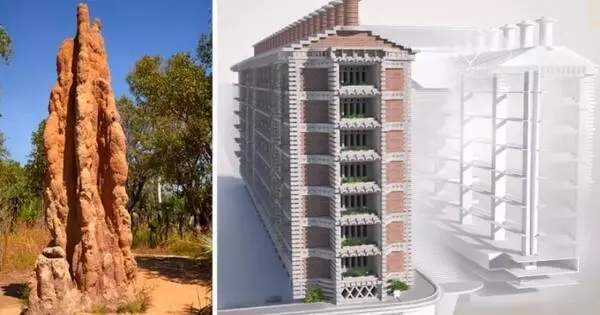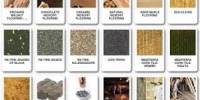Termites are well-known for their ability to build large, complex mounds that regulate internal temperature, humidity, and ventilation. This natural ventilation system has inspired researchers to create climate-friendly air conditioning systems based on the principles of termite mounds.
Termites’ use of climate control in their mounds may inspire tomorrow’s climate-smart buildings. According to new research from Sweden’s Lund University, future buildings inspired by termites could achieve the same effect as traditional climate control, but with greater energy efficiency and without the carbon dioxide footprint.
Termite mounds have an advanced ventilation system that allows air to circulate throughout the structure. This aids in the maintenance and regulation of temperature and humidity.
“The digitalization of design and construction processes creates enormous opportunities for how we shape architecture, and natural and biological systems provide an important model for how we can best utilize these possibilities,” writes David Andréen, senior lecturer at Lund University’s Department of Architecture and Built Environment, who wrote the article.
The findings, published in the journal Frontiers in Materials, show a building structure based on termite mounds that improves indoor climate control.
This is a precondition for a distributed system in which many small sensors and regulating devices are placed in the climate-adaptive building envelope through miniaturisation, durability/sustainability, and cost reduction.
David Andréen
“The research focuses on the interior of termite mounds, which are made up of thousands of interconnected channels, tunnels, and air chambers that capture wind energy in order to “breathe,” or exchange oxygen and carbon dioxide with the surrounding environment. We investigated how these systems function and how similar structures could be integrated into building walls to drive the flow of air, heat, and moisture in novel ways.”
The goal is to develop new methods of controlling airflow in buildings that are significantly more energy-efficient and climate-smart than traditional air conditioning, which employs the bulk flow principle and is typically powered by fans. Instead, it is possible to create turbulent, dynamic, and variable systems.
“These can be controlled by very small equipment and require minor energy provision,” says David Andréen.

The researchers demonstrated how airflows interact with geometry – the structural parameters that cause the flows to arise and how they can be selectively regulated – in the study. Because only electronic control is required, these can be driven without the use of mechanical components such as fans, valves, and the like.
“This is a precondition for a distributed system in which many small sensors and regulating devices are placed in the climate-adaptive building envelope through miniaturisation, durability/sustainability, and cost reduction,” David Andréen says.
This allows for the regulation of the building’s indoor climate and the control of factors such as temperature and humidity without the use of large fans or heating and cooling systems. The mechanisms rely on the ability to create complex internal geometries (on the millimetre to centimetre scale), which can only be accomplished with 3D printing. Value can be added to the built environment through 3D printing, allowing for the creation of sustainable architecture that would not have been possible otherwise.
“It’s fascinating how the termite building process manages to create extremely complex, well-functioning “engineering masterpieces” without the centralised control or drawings that we would require,” David Andréen concludes.
















